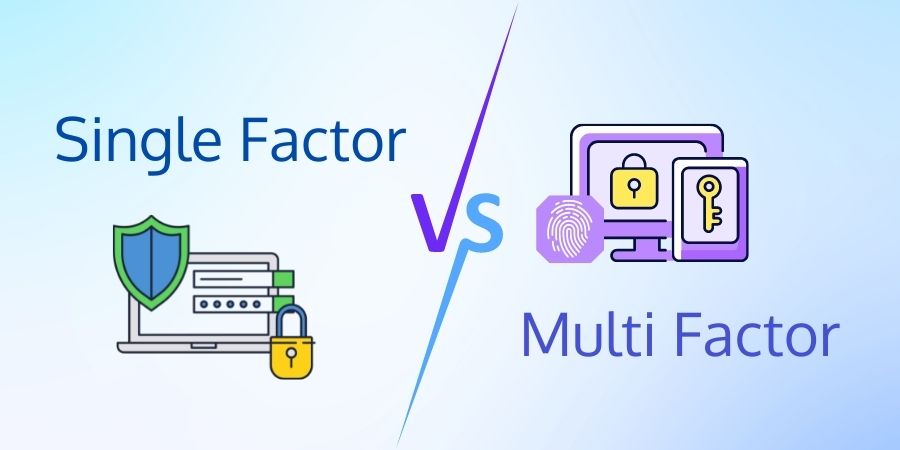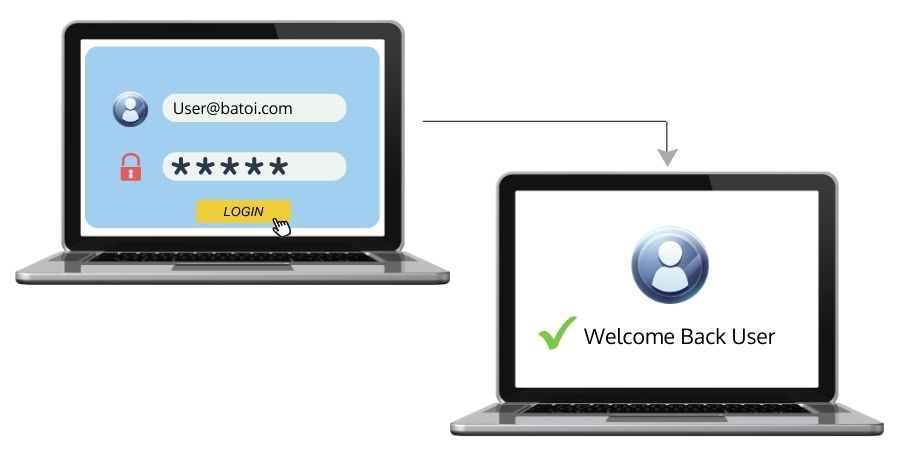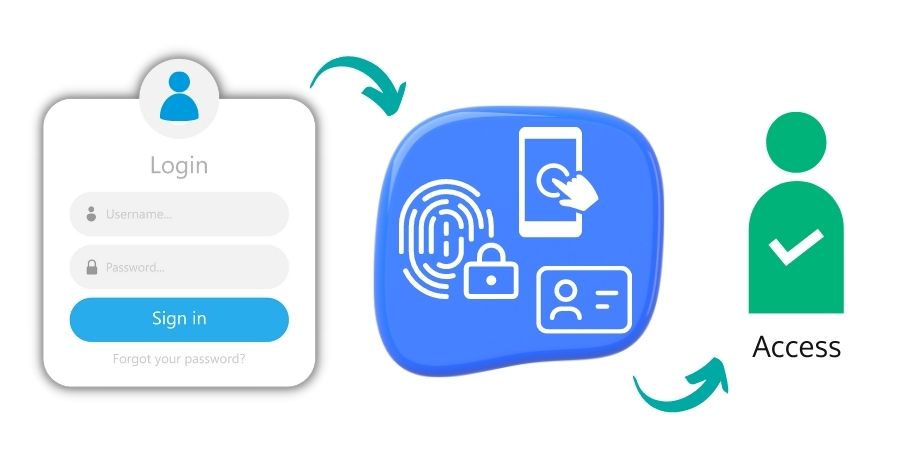
Introduction
Various authentication solutions are available in the landscape of cybersecurity. The tech terminologies often confuse the user as to what authentication mechanism will best protect the modern security threats. But every individual and internet users need to understand the security posture and the impact of using various authentication mechanisms. This article will address the two popular ways of authentication - single-factor and multi-factor authentication.
What Is Authentication?
Authentication is the process of recognising and verifying someone or something as a user identity. This mechanism involves verifying incoming requests against a set of distinguished credentials. Most of the authentication process runs at the very beginning of any application. Different applications demand different forms of user credentials to determine a legitimate user. Standard authentication credentials are user ID, email, PIN, password, passphrase, etc.
A typical example could be when customers need to buy from an e-commerce site, app or service; they should enter their username and password.

What Is Single-factor Authentication?
Single-factor authentication is the simplest and considerably faster means of authentication into a system. Through this method, a user matches a single set of credentials for verifying his digital identity online, hence the name. Single-factor authentication has only one layer of digital identity verification and is thus less secure. The most prevalent example of single-factor authentication is authentication through username and password. Almost all digital verification (in devices and applications) leverages this authentication method.

What is Multi-factor Authentication?
Multi-factor authentication is another method of authentication that uses more than one factor or layer for successful authentication. It uses a combination of various security credentials like something you know, something you have, and something you are. Going through multiple levels of authentication contributes to better security for the users. Multi-factor authentication resides at the core of any robust identity and access management (IAM) policy. There are several aspects (popularly known as factors) based on which the authentication depends. These are:
- Knowledge or something you know (for example, password, PIN, passphrase)
- Possession, or something you have (for example, smartphone, smart card, wearable, cryptographic key, etc.)
- Inherence, or something you are (for example, fingerprint, voice command, iris scan, etc.)
- Context (for example, geo-location, IP address, how you as a user react, search patterns, etc.)
Two-factor authentication (2FA) is a subset of multi-factor authentication. 2FA uses the username and password as the first credential. Then the second layer of authentication asks for verifying with something a person belongs to that person only.
Simply put, it is an authentication method that employs two factors to confirm an identity.
Impact on Account Security
Although single-factor authentication is straightforward, it doesn't add much value to the authentication mechanism. In this authentication mechanism, the password is the only element that can stop unauthorised access. A single layer of authentication is not a tough nut to crack for cybercriminals. There are various ways cybercriminals and bad actors can take your password or PIN that you use for your single-factor authentication. SFA is prone to prominent attacks such as shoulder surfing, phishing, brute force, keylogging, etc. Compromising the password or PIN can lead cybercriminals to unauthorised access.
However, if you have multi-factor authentication enabled, there will be two or more layers of authentication. That makes it difficult for someone to gain unauthorised access to a system. Each of its authentication factors is independent of the other. So, even if a bad actor or a malicious user gains access bypassing the first layer of authentication through a password, the second layer of authentication will restrict unauthorised access. Some general examples of multi-factor authentication are password (something you know) with fingerprint (something you are) or password (something you know) with One Time Passcode or OTP (something you have).
Context-based authentication has also become another factor that modern applications and servers automatically check for enhanced security. Risk-based authentication is one such example that uses an additional layer of account security. It triggers notifications or activities based on user behaviour. It checks the user's IP, geo-location, and browser, and if the system finds any suspicious login, it will prompt a security question or trigger an OTP-based login.
Single-factor Authentication vs Multi-factor Authentication
Let's look at some differences between SFA and MFA and how they can impact account security.
| Single-factor Authentication | Multi-factor Authentication |
|---|---|
| SFA has a single layer of authentication. | MFA has multi-layers of authentication. |
| It is simple and fast. | It takes a little more time than SFA. |
| This type of authentication poses security risks. | The security risk for authentication is the least with MFA. |
| If your password gets compromised through keyloggers, Trojans, or phishing pages, gaining access to the account becomes a piece of cake. | Even if cybercriminals compromise your password through different techniques, the other authentication factors will prevent them from gaining unauthorised access. |
Even if cybercriminals compromise your password through different techniques, the other authentication factors will prevent them from gaining unauthorised access. |
Conclusion
We hope this comprehension has given you a clear understanding of SFA vs MFA. From the above article, it seems clear that multi-factor authentication has a higher degree of security towards authentication & malicious access prevention measures. Today's modern CIAM solutions provide all the different forms of authentication, including multi-factor authentication. Customers and users should leverage multi-factor authentication to gain confidence that only legitimate user(s) can access sensitive and confidential data.














 Batoi Corporate Office
Batoi Corporate Office